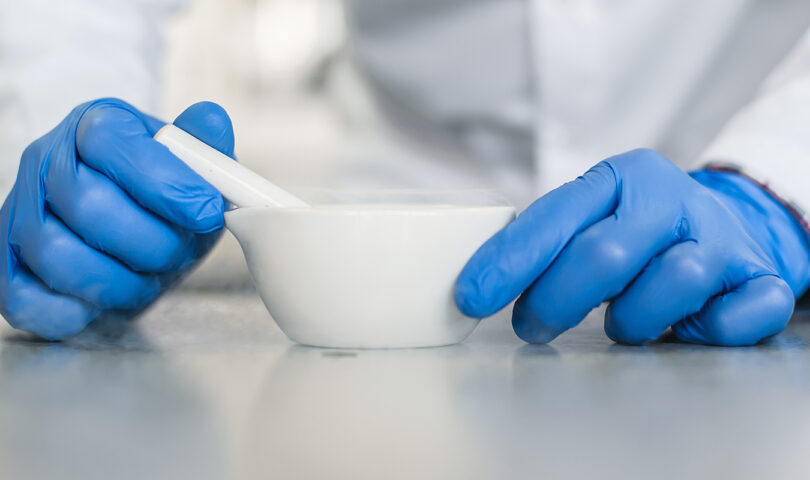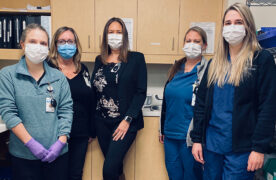EXTENSION OF IMPLEMENTATION DEADLINES
In recognition of the evolving COVID-19 pandemic situation and the need for pharmacy professionals to focus on continuity of care and minimizing public risk, the earlier this year the College Board (Council) approved an extension of the deadlines for pharmacies to meet the NAPRA Model Standards for Pharmacy Compounding of Non-Sterile Preparations. While the College acknowledges that the requirements of the standards may necessitate significant changes in pharmacy processes and facilities, the implementation of and adherence to these standards is an important way to enhance patient safety and protect the health of those engaged in compounding activities. Pharmacy professionals are also encouraged to review the resources provided on the next page to guide decision making on whether to engage in compounding.
The updated timelines for each phase are:
- Phase 2: July 1, 2021 – Personnel Training and Quality Assurance
- Phase 3: January 1, 2022 – Facilities and Equipment
Although the deadlines for Phase 2 and 3 have been extended, it is the College’s expectation that pharmacies and pharmacy professionals continue to be engaged in preparing their pharmacy for full implementation of the standards.
MOVING FROM RISK ASSESSMENTS TO IMPLEMENTATION
In Phase 1, which had a deadline of January 1, 2020, pharmacies performing non-sterile compounding must focus on assessing their risks and gaps. This includes:
- reviewing the NAPRA standards and guidance document,
- completing a risk assessment for each preparation compounded by the pharmacy,
- determining whether the pharmacy needs to meet Level A, B or C requirements, and
- performing a gap analysis to compare the pharmacy’s current practices to the minimum standards.
As the January 1, 2020 deadline has now passed, College operations advisors will be looking for completion of Phase 1 activities when performing pharmacy assessments.
The information from both the risk assessments and gap analysis should roll into identifying priorities for the coming year, including:
- creating Master Formulation Records for each preparation,
- developing policies and procedures, especially those related to personnel,
- completing skills assessments for personnel and developing training,
- developing a quality assurance program for personnel, and
- identifying necessary facility/equipment renovations, repairs or purchases.
It will be important for pharmacy managers to work collaboratively with all pharmacy staff, including pharmacists, pharmacy technicians, non-regulated compounders, and cleaning personnel to divide the workload and support full participation in training and implementation.
HELPFUL RESOURCES TO SUPPORT IMPLEMENTATION
- Checklist of Activities for Each Phase of Implementation
A checklist to provide guidance to pharmacies as they work to implement the requirements of each phase. - Frequently Asked Questions about Implementation of the Standards
FAQs regarding implementation, including whether a pharmacy can decide not to prepare compounded medications, clarifications on WHMIS and NIOSH lists and mitigating risk. - Non-Sterile Preparations Assessment Criteria
Document to assist pharmacies in conducting a gap analysis to current processes. - Non-Sterile Compounding Key Initiative
A central hub for all the College’s information and resources related to non-sterile compounding.
CONSIDERING WHETHER TO COMPOUND AT THE PHARMACY
Pharmacists apply their knowledge and expertise when reviewing a prescription to ensure that it is the most appropriate for the patient and condition being treated. Relevant patient information must be gathered and interpreted to determine whether the medication, dose and regimen are suitable, in light of the patient’s specific characteristics.
When the prescription is for a compounded non-sterile preparation, the pharmacist’s assessment must also take into account the incremental risk inherent to compounding compared to dispensing an approved drug product manufactured under stringent regulations. Although compounding has always been an integral role of the profession, the implementation of the NAPRA standards has prompted pharmacies to concentrate on or perhaps renew their focus on the identification, assessment and mitigation of these potential risks.
The pharmacist or pharmacy technician designated as the non-sterile compounding supervisor must determine that the appropriate resources are available to safely compound a high quality preparation. This includes having trained and competent compounding personnel, a Master Formulation Record or the ability to develop one, and suitable facilities and equipment.
The pharmacist’s assessment should determine that the compounded preparation is the most appropriate treatment option and evaluating the therapeutic need for a customized formulation to meet the unique circumstances of a specific patient.
Two Resources to Help Guide Decision Making on Whether to Engage in Compounding
NAPRA Guidance Document for Pharmacy Compounding of Non-Sterile Preparations
Section 2.1 General guidance on whether to compound a preparation
- Are the active ingredients already available in a manufactured product?
- Do you have a referenced formulation?
- Do you have the beyond-use date (BUD) and relevant stability data?
- Do you have a dedicated space for compounding that is clean and uncluttered?
- Do you have the appropriate equipment and ingredients to make the compounded preparation?
- Are your pharmacy personnel competent to perform compounding of the preparation?
- Can your pharmacy personnel compound the preparation without interruption?
- Should you refer this compounded preparation to another pharmacy with appropriate facilities, equipment and expertise?
Health Canada Policy on Manufacturing and Compounding Drug Products in Canada (POL-0051) (2009)*
Appendix 1 General Guideline on Compounding and Manufacturing Activities
| Question to Ask | Compounding | Manufacturing |
|---|---|---|
| Is there a demonstrated patient-healthcare professional relationship? | Yes | No |
| Is there third party reselling of the product outside of the patient-healthcare professional relationship? | No | Yes |
| Is the activity regulated, and facility possibly inspected, by the province/territory? | Yes | No |
| If producing product in anticipation of a prescription, is the amount produced consistent with the history of prescriptions received? | Yes | No |
| Is there an inordinate amount of product produced or on a regular basis? | No | Yes |
| Is an identical product (e.g. dosage form, strength, formulation) commercially available? | No | Yes |
| Is the product and/or compounding service promoted or advertised to the general public rather than strictly to healthcare professionals? | No | Yes |
| Does the drug product require only minor modification prior to direct administration when such modification amounts to mere directions for use? | No | Yes |
*Note that this has been adapted from the original to a table format













